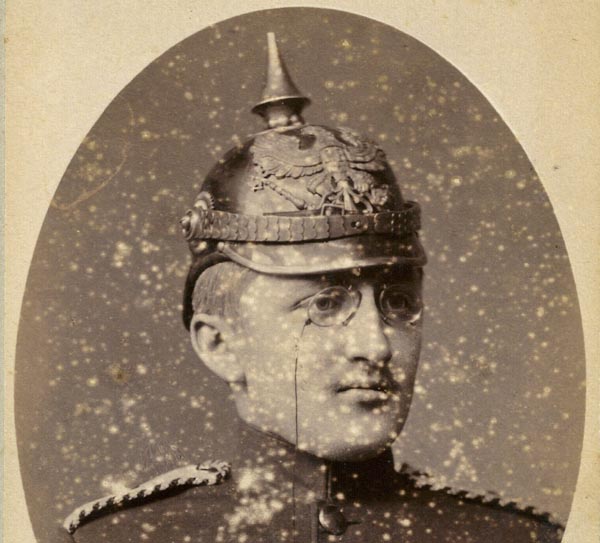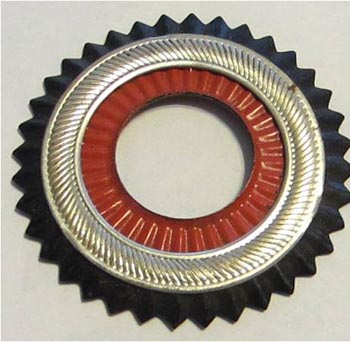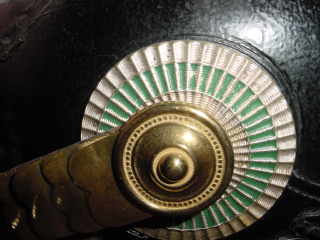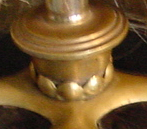NCO Helmets
| There was no such thing. The old pearl rings for enlisted helmets are often called NCO helmets on eBay. Somebody somewhere got the idea that a Pearl ring that was not an officer must be an NCO. A common fable.

|
| The problem lies with an understanding of the word “NCO”. There were no NCO helmets. However, there were several ranks that were allowed to wear officer sword knots called Portapee. What we frequently find in the English language conventional wisdom is trying to stick all German enlisted ranks into the same hole that fits American enlisted ranks. Or British. Anyone could buy a private purchase helmet. The general thought was that a private purchase helmet was lighter and more comfortable.
However, these helmets were extremely expensive and the vast majority of individuals did not have any assets. At all. Nothing. Going into the Army was a step up in living conditions for the average urban guy. Issue helmet were also called Kammer quality named after the supply room where the helmets were kept. The markings on the back of the helmet were known as Kammer marks. Those marks are only on an issue helmets.
There was another class of individuals – a small but well known segment known as the one your volunteers (OYV). In exchange for a shorter service commitments and all sorts of perks these guys agreed to be supernumerary to the establishment. They could either buy their own helmet or rent it from the unit. These guys were in many ways separate from the average recruit, often ate in the officer’s mess though not in the same area, and were addressed with the formal Sie as opposed to be informal du of normal recruits. Many of the private purchase helmets that we see come from this group. These guys started out as privates. They could be promoted and were eventually destined to be somewhat higher ranking in the reserves. NCOs or possibly officers. If they joined the reserve officer group you would see many of these private purchase helmets “upgraded” or refurbished in order to be made into proper officers helmets without going through the total expense of a new helmet. These guys would not have an officer’s sword knot until they were serving in the reserves. This entire system did not exist in the USA or Great Britain. Therefore, English-language sources generally tried to put them in a box that really did not fit.
The guys with sword knots were limited to three different ranks. Fedwebel, Vize-Feldwebel, and Fähnrich. The first two of these were senior NCOs. Fähnriche were far less senior and there was always an understanding that they would become officers either through the Academy system or through the Fahnenjunker system. What all three of these guys had in common was not a different helmet but rather a specific cockade. These guys had a midsize cockade with one silver ring. Other enlisted soldiers had no silver ring and officers generally had two silver rings. (Now there are all sorts of exceptions concerning cockade’s and so these are just generalities).
It gets more complicated as private purchase helmets tended not to follow the all enlisted or all officer pattern. There was commonly a mix. For each and every rule an example there is an exception. But just getting to understand the promotion concept is difficult enough. |
|
In general, there seemed to be several frequently seen trends. Officer Cockades are larger. Generally about 55 mm. They have a double ring on many. For example: |
|
|
|
An enlisted cockade is smaller generally 48 mm. There is no metal ring attached. For example: |
|
The Portapee NCO cockade is often the same size as the enlisted one at 48 mm but has a single ring. |
 |
|
|
Both single and double rings are attached making this a multiple piece cockade. |
|
Some officer helmets are not multiple piece but rather one piece and have no rings. This is the same for some Portapee cockades but this is entirely state specific. |
 |
|
In addition, there is a difference in the size of the holes. Big holes accommodate M91 type posts while the small holes accommodate a smaller brad. most officer helmets have small holes until you get to the M15 type. |
|
|
|
|
This is a salesman’s sample of cockades from Baden kindly lent to us from the LeBrasseur collection. This is all the different kinds of cockades from that state. You can see that there are anomalies and the most telling is the color scheme of the single ring cockade-not at all what you would have expected. |
|

|
There are two kinds of pearl rings. Old style which were discontinued officially for many units in the 1895 pattern OR helmet. OR pickelhauben are often called “NCO pearl rings” in error. Every OR had them up until 1887 and some unit types retained the old style pearl ring right to the end. It is possibly an NCO but more probably an OR. If you have a 48mm cockade with a silver ring it could well be a Feldwebel. |
|
The Officer or private purchase pearl ring was the egg and dart variety. |
|
|
|
|
|
The most important thing to remember about these cockades is that there are many many variations. Many of these variations are specific to the various states and some can be attributed to changes over time. There are very very few hard and fast rules. |
|
|
|